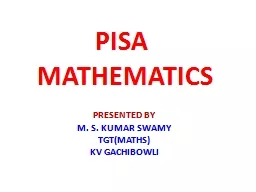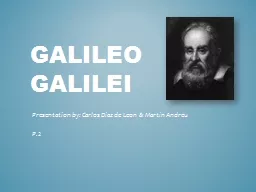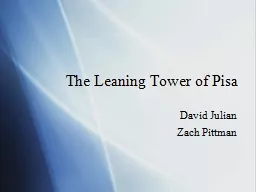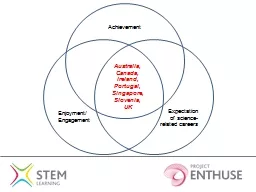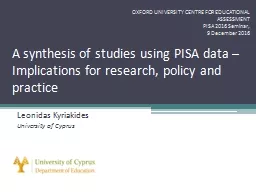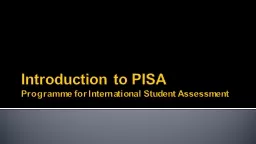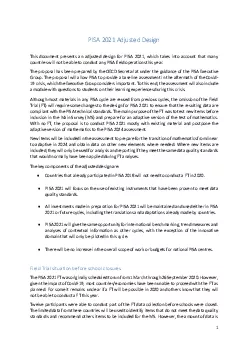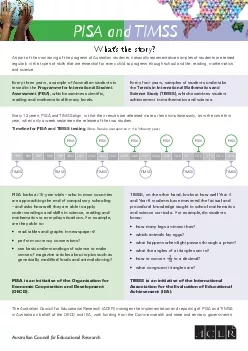PPT-PISA MATHEMATICS PRESENTED BY
Author : tatyana-admore | Published Date : 2019-11-24
PISA MATHEMATICS PRESENTED BY M S KUMAR SWAMY TGTMATHS KV GACHIBOWLI PISA PROGRAMME FOR INTERNATIONAL STUDENT ASSESSMENT PISA is a collaborative effort on the part
Presentation Embed Code
Download Presentation
Download Presentation The PPT/PDF document "PISA MATHEMATICS PRESENTED BY" is the property of its rightful owner. Permission is granted to download and print the materials on this website for personal, non-commercial use only, and to display it on your personal computer provided you do not modify the materials and that you retain all copyright notices contained in the materials. By downloading content from our website, you accept the terms of this agreement.
PISA MATHEMATICS PRESENTED BY: Transcript
Download Rules Of Document
"PISA MATHEMATICS PRESENTED BY"The content belongs to its owner. You may download and print it for personal use, without modification, and keep all copyright notices. By downloading, you agree to these terms.
Related Documents

